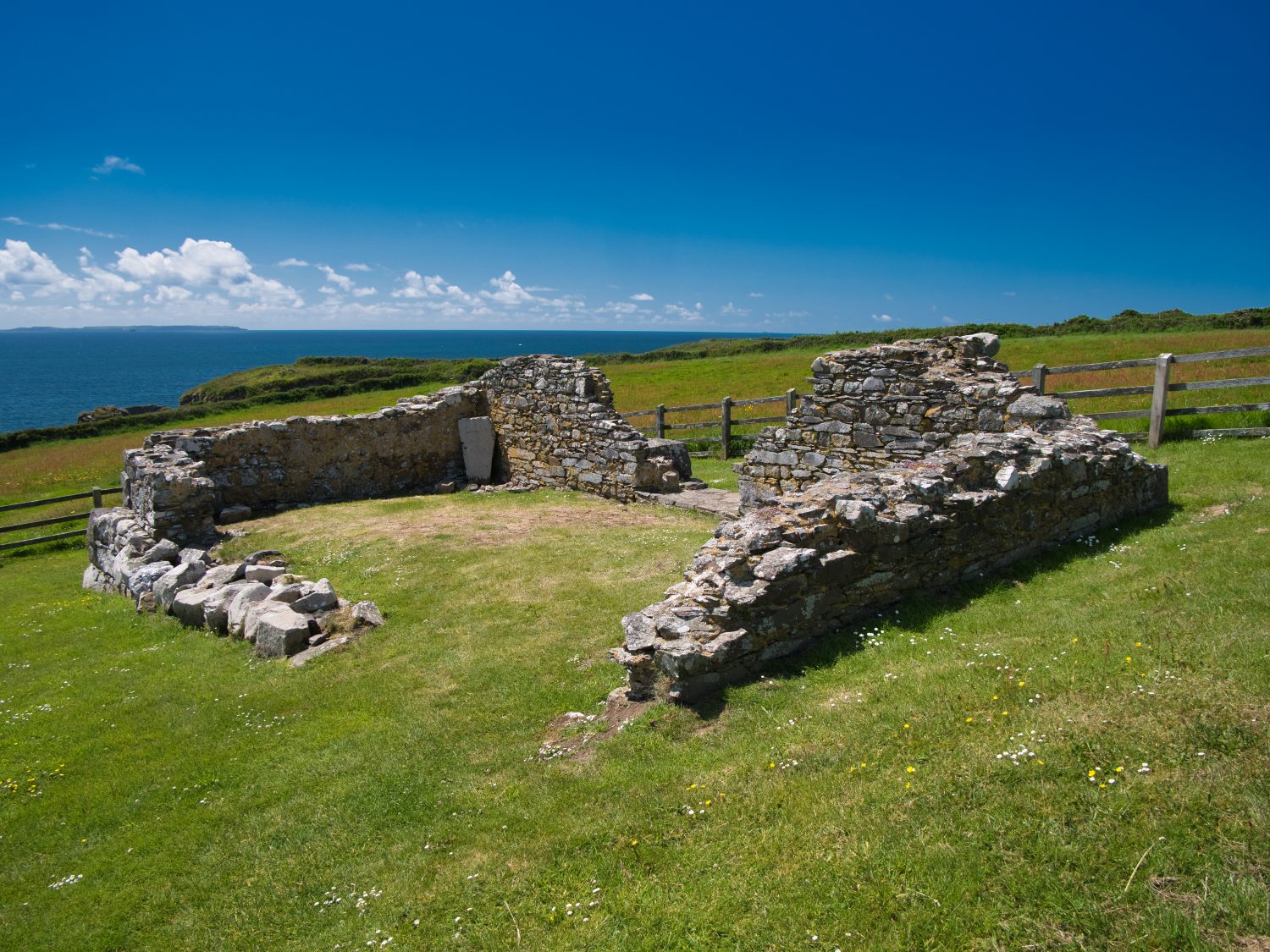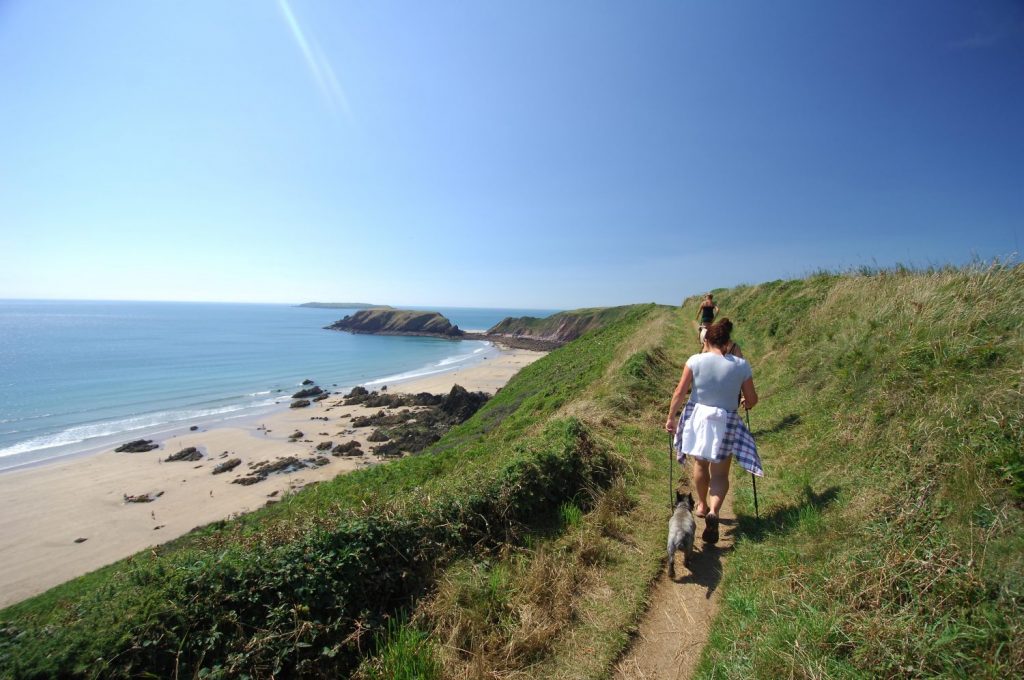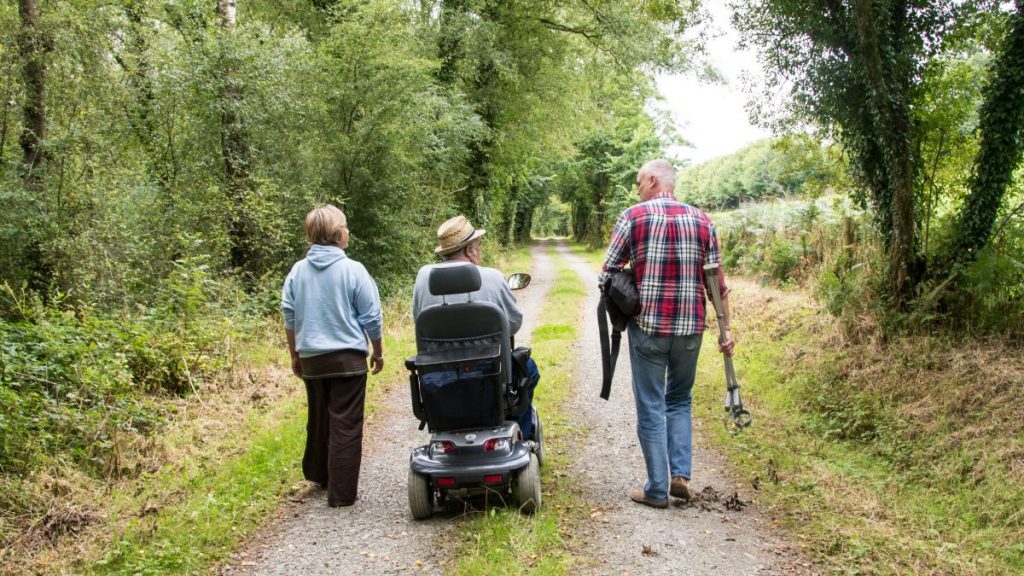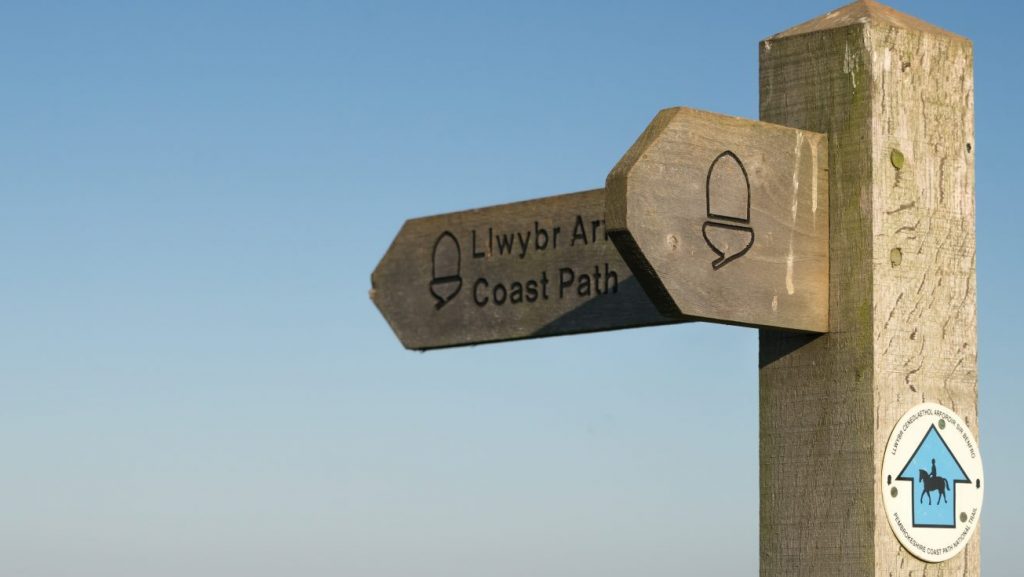DISTANCE/DURATION: 2.0 miles (3.2 km) 1 hour
PUBLIC TRANSPORT: Service bus Fishguard 413 and Haverfordwest 411, *Puffin Shuttle 400, *Celtic Coaster 403, *Strumble Shuttle 404 (*seasonal, hail & ride)
CHARACTER: Coastal, cliff edge, reasonably level, 0.6 mile (1 km) minor road walking
LOOK OUT FOR: Purple/pink sandstone of Caerfai beach, St. Non’s Chapel, holy well, medieval chapel ruins superb coastal views, sea birds, coastal flowers in spring/summer.
Caerfai’s sandstone is very special, somewhere between grey and red when dry but turning to a deep purple when wet.
Take a look at the pebbles on Caerfai’s small beach to see the effect as the tide falls. It comes as no surprise then that this beautiful stone was quarried from the cliffs in this area for use by the masons who built St Davids Cathedral.
In recent years a quarry was briefly re-opened at nearby Caerbwdi to supply stone for restoration work at the cathedral.
At St Non’s – named after David’s mother – is a ruined chapel, said to mark the spot where St David was born during a wild gale. The chapel and its nearby holy well were and important place of pilgrimage in the Middle Ages – especially on St Non’s Day, March 2nd.
St Non’s Well was one of the most sacred wells in Wales and its water was thought to be a cure for eye diseases.

The little city named after David, with its cathedral and ruined bishop’s palace, has to be one of the most magical places in Britain. St David established an early Christian community alongside the River Alun in the 6th century; this grew in importance after his death in around 600AD.
For centuries pilgrims travelled to St Davids to pay homage at his shrine. Even William the Conqueror visited in 1081.
David was canonised in 1120 when it was decreed that two pilgrimages to his shrine equalled one pilgrimage to Rome. Work on a great cathedral to replace the earlier monastic church started in 1180.
As you walk, look out for the many birds that make the clifftop scrub and grassland their home. You may see a chough, while skylarks, yellowhammers and meadow and rock pipits add their song to the beauty of the place in spring and summer.
Find This Walk
Grid ref: SM755244
SAFETY FIRST!
- Take great care when on the Coast Path
- Stay on the path and away from cliff edges
- Wear boots and warm, waterproof clothing
- Take extra care in windy and/or wet conditions
- Always supervise children and dogs
- Leave gates and property as you find them



